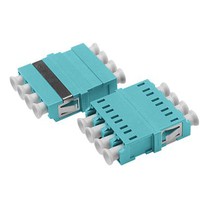
The main differences between indoor and outdoor fiber optic cables lie in their construction, materials, and environmental durability. Here are the key distinctions:
Indoor Fiber Optic Cable:
Construction: Indoor cables are designed for installation in controlled indoor environments, such as office buildings or data centers. They typically have a tight-buffered design, with each fiber enclosed in its own protective buffer coating.
Jacket Material: Indoor cables often use materials like PVC (polyvinyl chloride) or LSZH (low smoke zero halogen) for the outer jacket. LSZH cables are preferred in environments where fire safety is a concern because they emit minimal smoke and no toxic halogen gases when exposed to flames.
Flame Rating: Indoor cables typically have a lower flame rating requirement since they are intended for use in spaces with fire suppression systems and controlled fire risks.
Protection Against Moisture: Indoor cables are not designed to withstand exposure to moisture or harsh outdoor conditions.
Outdoor Fiber Optic Cable:
Construction: Outdoor cables are designed to withstand environmental factors such as moisture, UV radiation, temperature variations, and physical stress. They have a more rugged construction with additional layers of protection.
Jacket Material: Outdoor cables generally use materials like PE (polyethylene) or other weather-resistant compounds for the outer jacket. These materials provide excellent moisture resistance and protect against UV damage.
Strength Members: Outdoor cables often include additional strength members, such as aramid or fiberglass yarns, to enhance their mechanical strength and protect the fibers from stretching or damage during installation or while being pulled through conduit.
Water-blocking: Outdoor cables may incorporate water-blocking elements, such as gel-filled or dry water-blocking tapes, to prevent water ingress and maintain the performance of the fiber optic cable even in wet conditions.
It's important to note that outdoor cables can be used indoors, but indoor cables should not be used outdoors due to their limited durability and protection against environmental hazards. When selecting fiber optic cables, it's crucial to consider the specific installation requirements, environmental conditions, and applicable standards to ensure optimal performance and longevity.






